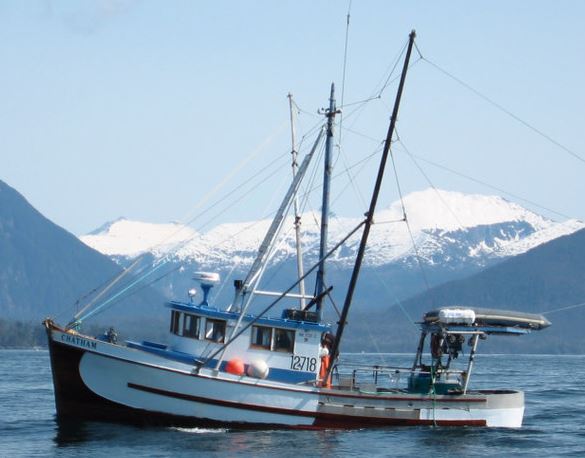
The Bering Sea: Sustaining Fisheries Through Hook and Line Fishing
Share

The Bering Sea, a vast and pristine ecosystem located between Alaska and Russia, is renowned for its rich marine life and thriving fisheries. Among the various fishing methods employed in this region, hook and line fishing stands out as an environmentally sustainable and ecologically responsible approach. In this blog post, we'll explore the benefits of hook and line fishing in the Bering Sea and why it's a vital component of maintaining the health of this unique marine ecosystem.
1. Selective and Low Impact Fishing Method: Hook and line fishing is a highly selective method, which means that fishermen can choose their catch carefully. This selectivity minimizes bycatch, the unintended capture of non-target species. By using hooks and lines, fishermen can significantly reduce the risk of harming marine life that isn't meant for harvest, such as seabirds, turtles, and other fish species.
2. Reduced Habitat Impact: One of the critical advantages of hook and line fishing is its minimal impact on the seafloor and marine habitats. Unlike some other fishing methods that involve trawling or dredging, hook and line fishing doesn't damage the sensitive ecosystems on the ocean floor. This makes it an eco-friendly choice for preserving the Bering Sea's diverse habitats.
3. Preservation of Fish Stocks: Hook and line fishing supports the sustainable management of fish stocks in the Bering Sea. Fishermen have the flexibility to release undersized or non-target species alive, allowing them to grow and reproduce. This responsible approach contributes to maintaining healthy fish populations, which is essential for the long-term viability of fisheries.
4. High-Quality Seafood: Hook and line fishing typically results in high-quality seafood products. The fish are brought on board individually, which minimizes bruising and damage. This gentle handling process ensures that consumers receive premium, fresh, and undamaged seafood, making it a preferred choice for consumers who value taste and quality.
5. Economic Benefits: The Bering Sea's fisheries are a vital economic resource for both Alaska and the United States. Hook and line fishing provides livelihoods for numerous individuals in the region. By adopting sustainable practices, it supports the long-term economic viability of the industry and the communities that rely on it.
6. Meeting Consumer Demand: In recent years, there has been a growing demand for sustainable seafood. Consumers are increasingly conscious of the environmental impact of their choices and prefer products that are harvested responsibly. Hook and line fishing in the Bering Sea aligns with this consumer demand for sustainable and ethically sourced seafood.
7. Contribution to Ecosystem Health: By participating in hook and line fishing, fishermen play a part in maintaining the overall health of the Bering Sea ecosystem. Sustainable fishing practices help keep the marine food web in balance, ensuring the well-being of both predator and prey species.
In conclusion, hook and line fishing in the Bering Sea is not only a practical and economically viable method, but it also contributes significantly to the sustainability and health of this unique marine ecosystem. Its selective, low-impact, and eco-friendly approach benefits fisheries, local communities, and the environment. By continuing to prioritize responsible fishing practices, the Bering Sea can remain a bountiful and thriving region for generations to come.
